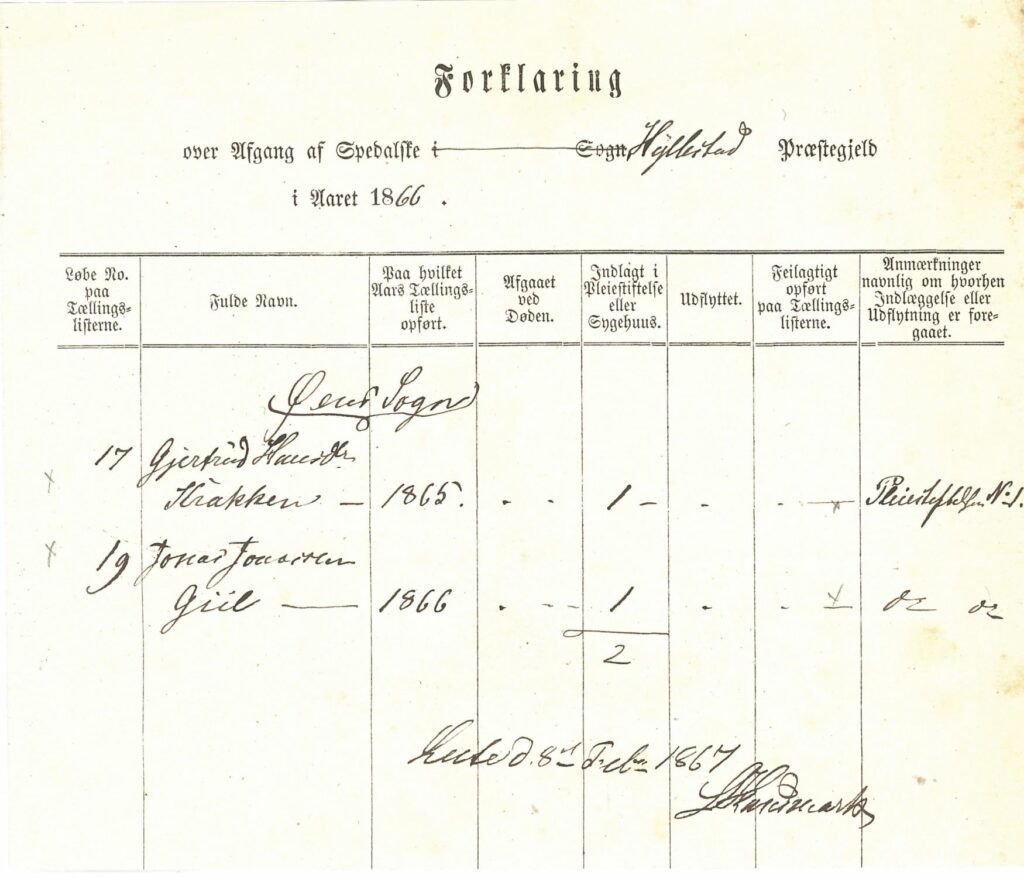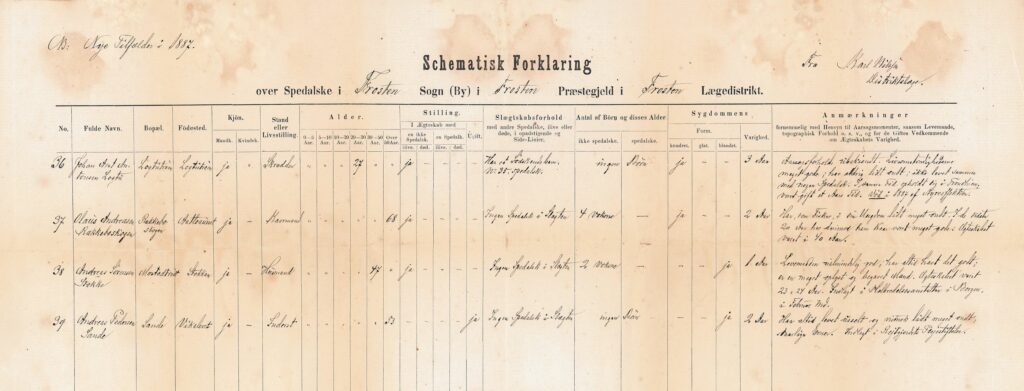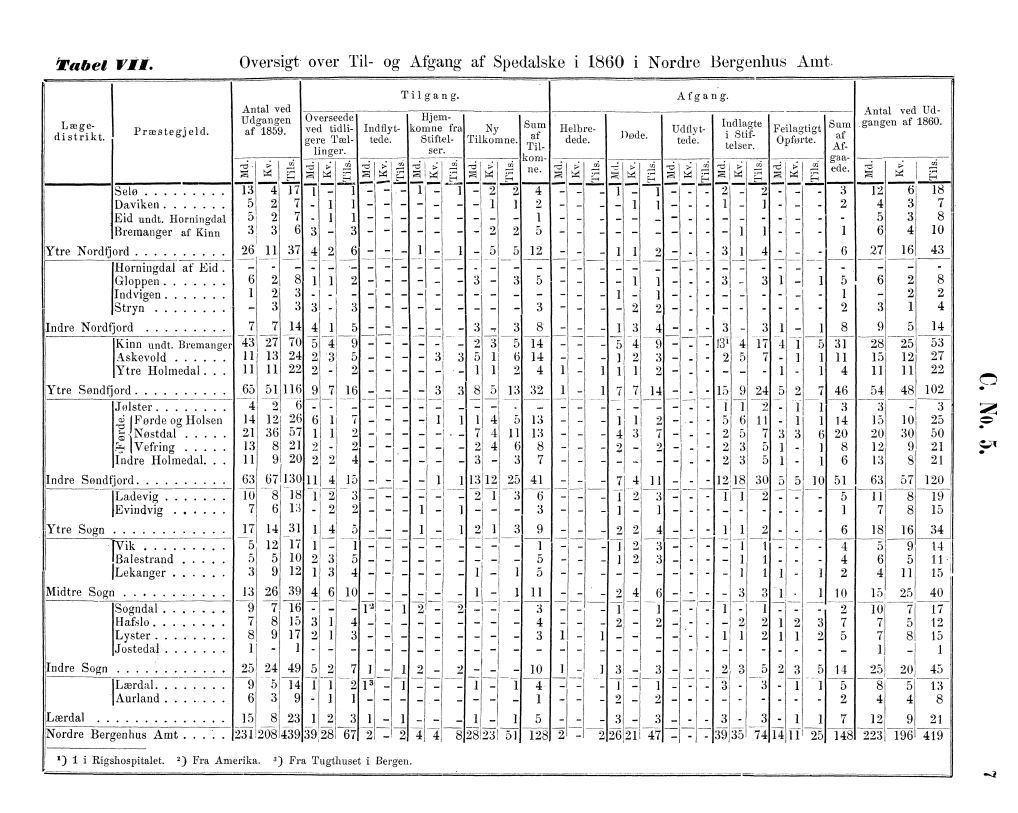A comprehensive system of registration
Medical officers played an important role in the mapping those with leprosy. They were in charge of producing detailed records of the medical histories of all those affected. They were to receive assistance from parish pastors and the health commissions, the local health boards of the day. These were initially only established in municipalities where leprosy was present.
There were several different forms for registering information. On the form for first-time registration, there were a number of columns that had to be filled in, including name, place of residence, place of birth, sex, profession, age, marital status, number of children, form of disease and how long they had had the disease. Since one of the goals was to investigate what caused the disease, and one main theory was that it was hereditary, there were also separate columns for information about whether their spouse, children or other relatives also had leprosy.
There was also a separate follow-up form. This was filled in if relatives had been infected, if the sick person had moved to another district or emigrated, if they had been cured or had relapsed, if the wrong form of leprosy had been diagnosed, if they had been admitted to a hospital – and if so, which hospital – and when they passed away.
All forms were sent in to the ‘Chief Medical Officer for Leprosy’ at least once a year. The reports from the whole country were then supplemented and organised in central registries, which the medical officer used to produce and publish statistical material. The ‘Tables of People Diagnosed with Leprosy in Norway’ also contain explanations and analyses of the data, as well as descriptions of activities at the various institutions.

The Regional State Archives of Bergen.

The Regional State Archives of Bergen.

Statistics Norway, www.ssb.no



